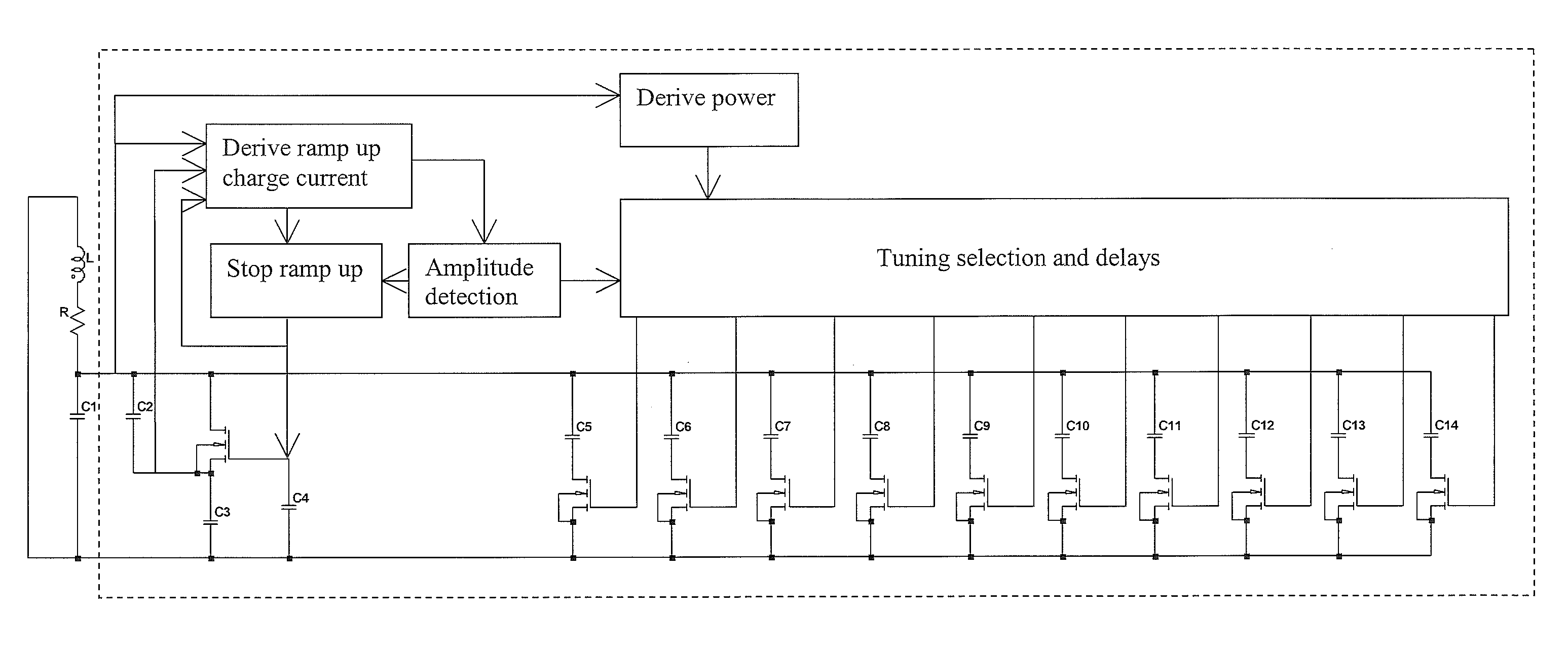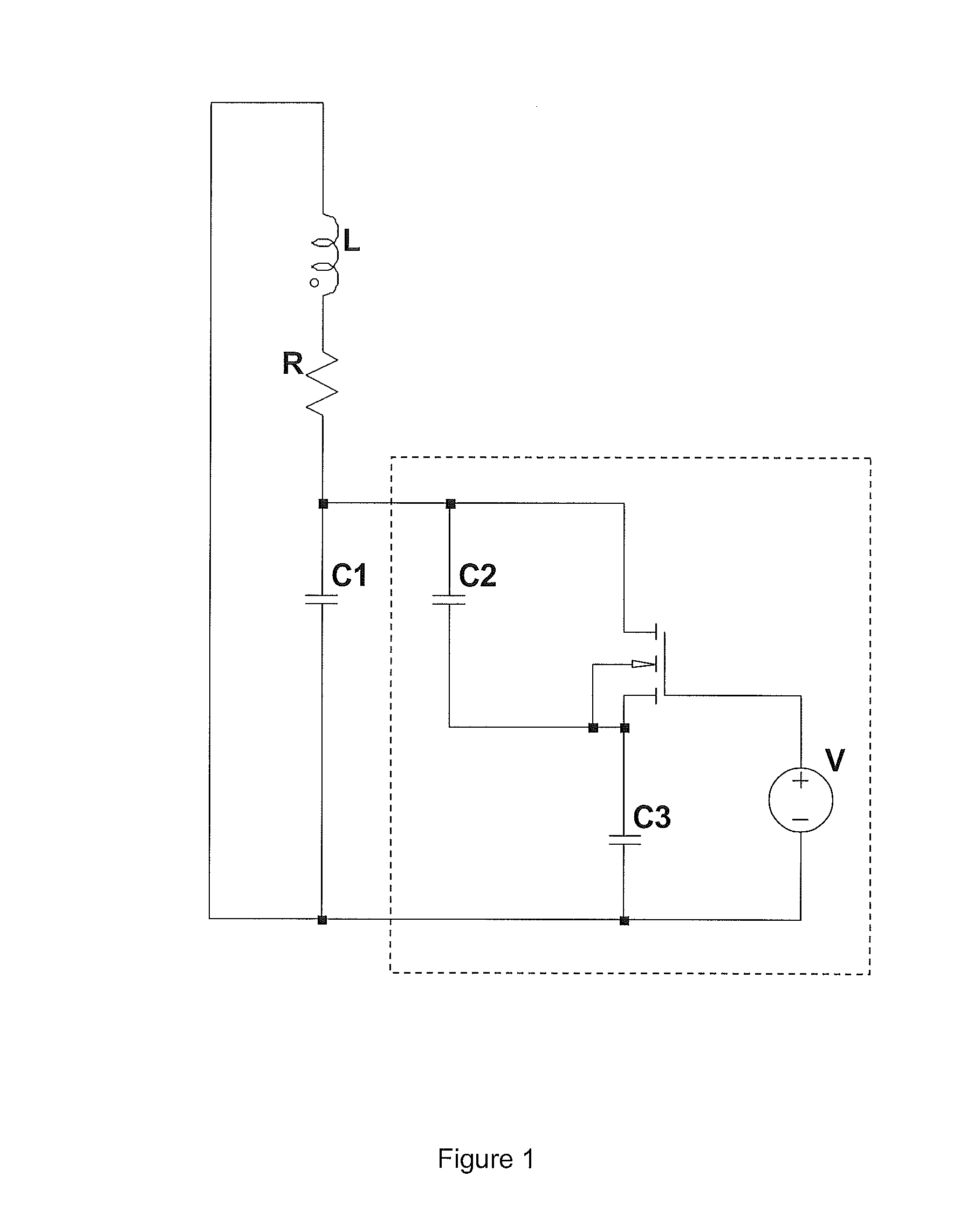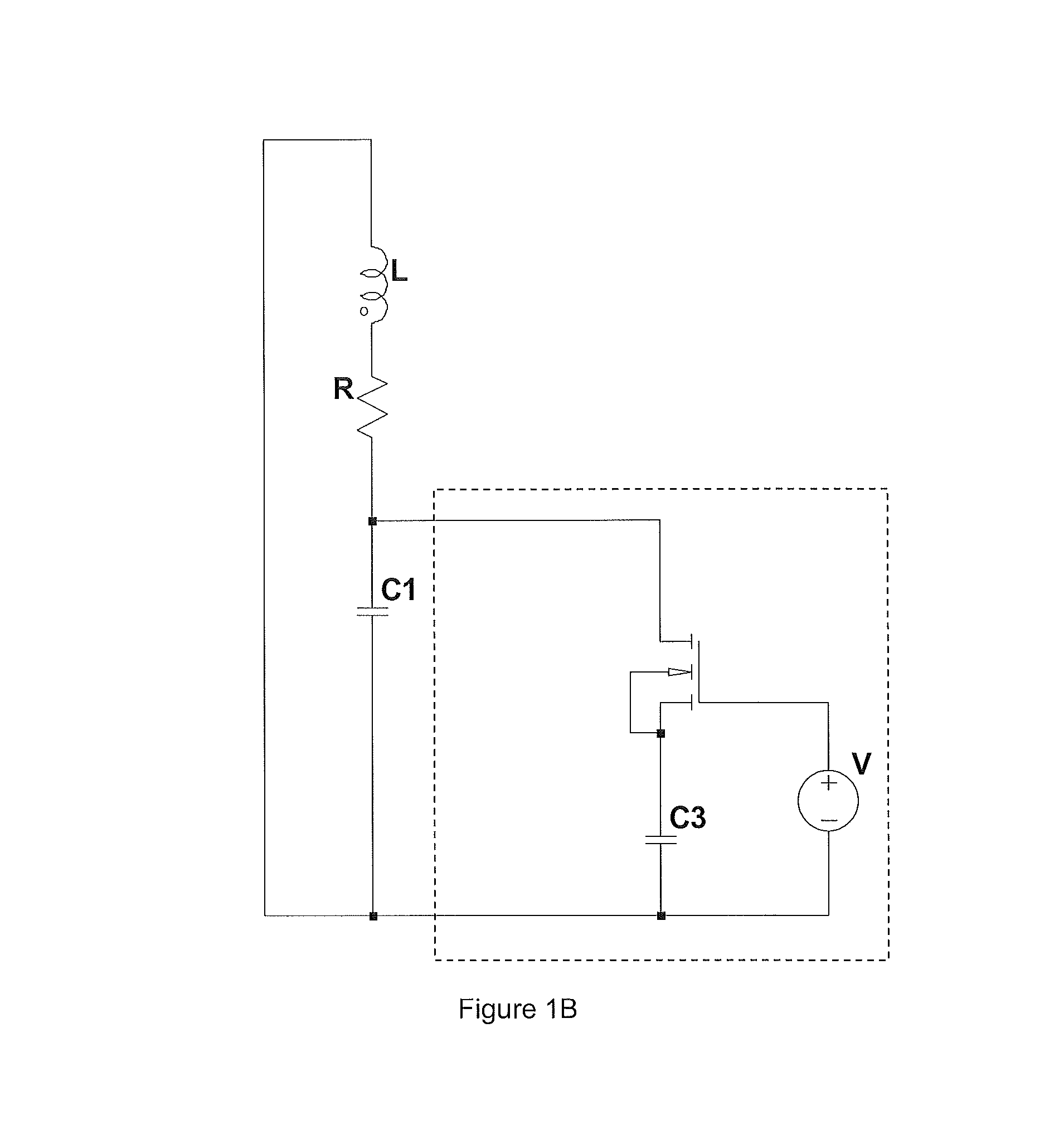Tuned resonant circuits
a resonant circuit and circuit block technology, applied in the direction of discontinuous tuning by electric means, generator stabilization, pulse automatic control, etc., can solve the problems of system susceptible to degradation, resonant frequency shifting from the intended frequency, detuned tag may not derive sufficient power to operate,
- Summary
- Abstract
- Description
- Claims
- Application Information
AI Technical Summary
Benefits of technology
Problems solved by technology
Method used
Image
Examples
Embodiment Construction
[0085]FIG. 1 shows an embodiment of a self-adaptive resonator. The resonator consists of an antenna L with series resistance R coupled to a capacitive network. The antenna is connected to a capacitive network C1, C2, C3 and a MOSFET. The capacitive network has two distinct states with the MOSFET on and MOSFET off. When the MOSFET is on the total capacitance is C1+C3, since C2 is shorted out, whereas when the MOSFET is off the total capacitance is reduced since C2 and C3 are now in series. The MOSFET is turned on or off depending on the amplitude of the waveform at the source potential, relative to the fixed gate voltage V. The duty cycle of the MOSFET turn on time varies with the resonance amplitude, which naturally adjusts to allow the resonator to match the stimulus frequency.
[0086]The amplitude of the resonator is controlled through the gate voltage V. If the voltage is reduced to negative voltages then the amplitude increases provided the frequency is between the following limit...
PUM
 Login to View More
Login to View More Abstract
Description
Claims
Application Information
 Login to View More
Login to View More - R&D
- Intellectual Property
- Life Sciences
- Materials
- Tech Scout
- Unparalleled Data Quality
- Higher Quality Content
- 60% Fewer Hallucinations
Browse by: Latest US Patents, China's latest patents, Technical Efficacy Thesaurus, Application Domain, Technology Topic, Popular Technical Reports.
© 2025 PatSnap. All rights reserved.Legal|Privacy policy|Modern Slavery Act Transparency Statement|Sitemap|About US| Contact US: help@patsnap.com



